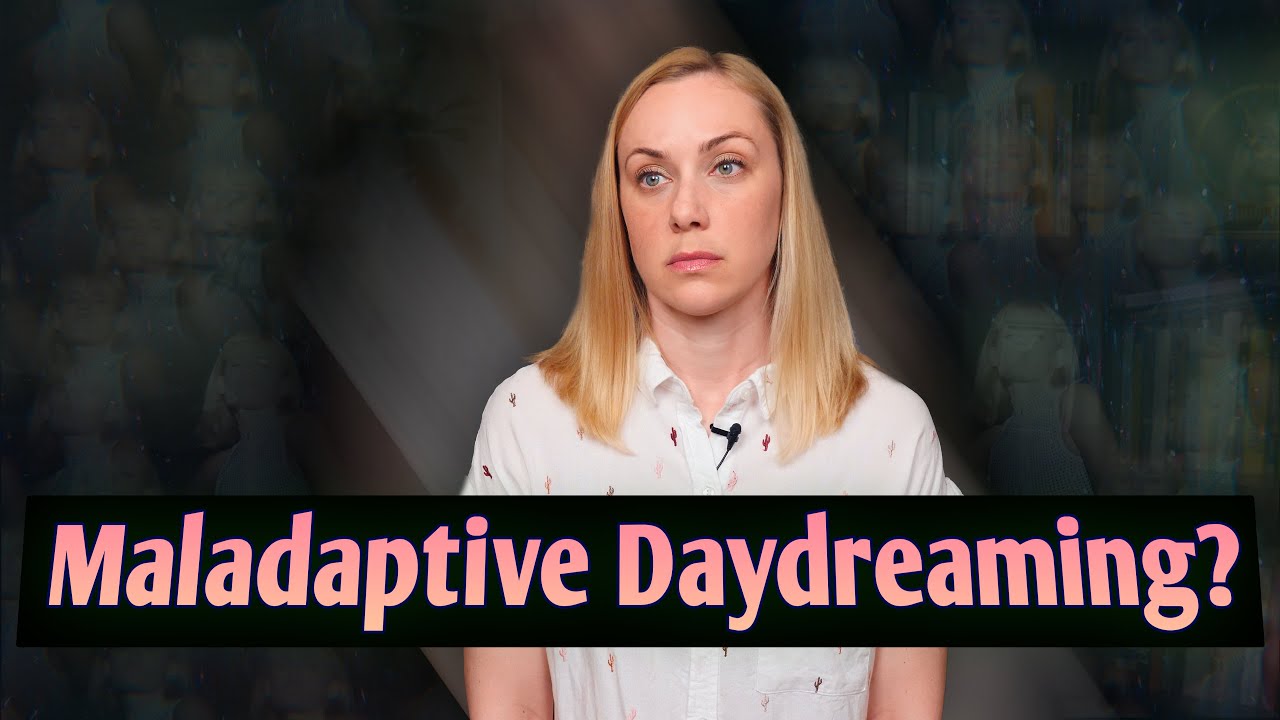Maladaptive Daydreaming Stories - Understanding Symptoms, Causes, And Treatment Options
Maladaptive daydreaming stories have become a popular topic of discussion in recent years. While daydreaming is a common and often enjoyable pastime for many people, some individuals experience a form of daydreaming that becomes maladaptive, interfering with their daily life and relationships.
Author:Georgia AshcroftReviewer:Ava MartinezFeb 28, 202368 Shares1.1K Views

Maladaptive daydreaming storieshave become a popular topic of discussion in recent years. While daydreaming is a common and often enjoyable pastime for many people, some individuals experience a form of daydreaming that becomes maladaptive, interfering with their daily life and relationships.
In this article, we will explore what maladaptive daydreaming is, share some personal stories of individuals who struggle with it, and discuss some potential ways to manage this condition.
What Is Maladaptive Daydreaming?
Maladaptive daydreaming is a condition characterized by excessive and immersive daydreaming that often becomes difficult to control. Individuals who experience maladaptive daydreaming may spend hours every day lost in their own thoughts, often developing intricate and detailed scenarios in their minds.
The daydreams are often intense and vivid, and the individual may feel emotionally connected to the scenarios and characters they create in their mind. This can interfere with daily activities such as work, school, and social interactions.
The condition is not currently recognized as a separate disorder by the Diagnostic and Statistical Manual of Mental Disorders (DSM-5), but it has gained recognition in recent years due to its prevalence and impact on those who experience it.
Individuals with maladaptive daydreaming stories often use their daydreams as a form of escapism, where they can create a world where they can control everything and be whoever they want to be.
However, this can lead to social isolation, anxiety, and depression, as individuals struggle to connect with others and participate in real-life situations. Maladaptive daydreaming is a complex condition that can have a significant impact on an individual's life, and it is important for individuals to seek support and treatment if they are experiencing symptoms of the condition.
Maladaptive Daydreaming Relationships
Maladaptive daydreaming can have a significant impact on an individual's relationships. Those who struggle with maladaptive daydreaming may find themselves withdrawing from social interactions and neglecting responsibilities, leading to strain on their relationships with family, friends, and partners.
The excessive and immersive nature of maladaptive daydreaming stories can lead to individuals spending hours lost in their daydreams, leaving little time or energy for real-life interactions. This can lead to feelings of loneliness and isolation, further exacerbating the cycle of maladaptive daydreaming.
In addition, maladaptive daydreaming can impact the quality of an individual's relationships. Those who struggle with maladaptive daydreaming may find it difficult to be present in conversations or engage in activities with others, leading to feelings of disconnect and disinterest.
They may also struggle to prioritize their relationships and neglect the needs of those around them. Over time, this can lead to distance and tension in their relationships, as loved ones feel ignored or undervalued.
Managing maladaptive daydreaming can improve an individual's relationships and overall quality of life. By seeking help and developing strategies to manage their daydreaming, individuals can better prioritize their relationships and engage in real-life interactions.
This can lead to improved communication, stronger connections, and a greater sense of fulfillment and well-being in their relationships.
Maladaptive Daydreaming Stories
Jenna's Story
Jenna is a 28-year-old woman who has been struggling with maladaptive daydreaming for most of her life. She often finds herself lost in vivid daydreams that can last for hours, causing her to lose track of time and miss important events.
Jenna describes her daydreams as a form of escapism, allowing her to create a world where she can control everything and be whoever she wants to be. However, this has caused her to become socially isolated and anxious, as she finds it difficult to connect with others and participate in real-life situations.
Mark's Story
Mark is a 34-year-old man who also struggles with maladaptive daydreaming. For him, daydreaming becomes an escape from his anxiety and depression. In his daydreams, he is successful, confident, and admired by others.
However, this causes him to neglect his responsibilities and relationships in real life. Mark has lost jobs and friends due to his excessive daydreaming, and he struggles to break free from the cycle of addiction that it creates.
Rachel's Story
Rachel is a 22-year-old college student who has recently discovered that her excessive daydreaming is impacting her academic performance. She often finds herself daydreaming during lectures and studying, causing her to miss important information and fall behind in her coursework.
Rachel also finds it difficult to focus on real-life situations, as her mind is often consumed by her daydreams. She is currently seeking therapy to help manage her maladaptive daydreaming.
Tyler's Story
Tyler is a 42-year-old man who has been struggling with maladaptive daydreaming for most of his life. His daydreams often involve intense and violent scenarios, causing him to become emotionally and mentally exhausted.
Tyler has sought help from therapists and medications but has yet to find a successful treatment that helps him manage his daydreaming.
Lily's Story
Lily is a 25-year-old woman who struggles with maladaptive daydreaming that is triggered by her past trauma. Her daydreams often involve reliving her traumatic experiences, causing her to become emotionally distressed and retraumatized.
Lily has sought help from therapists who specialize in trauma therapy, and she is currently working on managing her daydreaming in a way that is safe and healthy for her mental health.
Is Maladaptive Daydreaming Bad?
Maladaptive daydreaming can be considered bad because it can interfere with an individual's daily life and relationships. While daydreaming is a common and often enjoyable pastime, excessive and immersive daydreaming can become maladaptive and uncontrollable, leading to negative consequences.
Those who struggle with maladaptive daydreaming may find themselves isolated from friends and family, neglecting responsibilities, and experiencing anxiety or depression. Maladaptive daydreaming can also impact academic or work performance, making it difficult to focus on real-life situations.
Maladaptive daydreaming can also be harmful if the content of the daydreams is distressing or traumatic. For example, individuals may find themselves lost in daydreams that involve violence or re-living past traumas, which can lead to emotional distress and re-traumatization.
In addition, the excessive and immersive nature of maladaptive daydreaming can lead to physical and mental exhaustion, further impacting an individual's quality of life. It is important to note that not all daydreaming is maladaptive, and many people enjoy daydreaming without negative consequences.
However, for those who struggle with maladaptive daydreaming, it is important to seek help and develop strategies to manage their daydreaming in a way that is safe and healthy for their mental health.
Overall, while daydreaming can be a positive and enjoyable experience, excessive and immersive daydreaming can have negative consequences, highlighting the importance of understanding and managing maladaptive daydreaming.

Maladaptive Daydreaming
Ways To Manage Maladaptive Daydreaming
While there is currently no recognized cure for maladaptive daydreaming, there are several ways that individuals can manage their symptoms and improve their quality of life. Some potential ways to manage maladaptive daydreaming include:
Seeking Therapy
Talking to a therapist can help individuals better understand their maladaptive daydreaming and develop strategies to manage it. Therapy can help individuals identify the triggers that lead to their daydreaming and develop coping mechanisms to use in real-life situations.
Practicing Mindfulness
Mindfulness techniques such as meditation and breathing exercises can help individuals stay present and focused in the moment, reducing the urge to daydream.
Engaging In Real-Life Activities
Finding activities that are engaging and enjoyable in real life can help individuals reduce the amount of time they spend daydreaming. This can include hobbies, exercise, and spending time with friends and family.
Setting Limits
Setting limits on the amount of time spent daydreaming can help individuals regain control over their daydreaming and prevent it from interfering with their daily life.
Seeking Medication
In some cases, medication may be prescribed to help manage maladaptive daydreaming. However, medication should only be used under the guidance of a healthcare professional.
People Also Ask
What Are The Signs And Symptoms Of Maladaptive Daydreaming?
Signs and symptoms of maladaptive daydreaming include excessive and immersive daydreaming, difficulty controlling the daydreams, spending hours lost in thought, and emotional attachment to the scenarios and characters created in the daydreams.
Is Maladaptive Daydreaming A Recognized Disorder?
Maladaptive daydreaming is not currently recognized as a separate disorder by the Diagnostic and Statistical Manual of Mental Disorders (DSM-5).
What Are The Potential Causes Of Maladaptive Daydreaming?
The exact causes of maladaptive daydreaming are not yet understood, but some potential factors include childhood trauma, ADHD, OCD, and depression.
Can Maladaptive Daydreaming Be Treated?
Yes, maladaptive daydreaming can be treated through therapy, mindfulness techniques, engagement in real-life activities, setting limits, and potentially medication.
What Are The Potential Long-Term Effects Of Maladaptive Daydreaming?
The potential long-term effects of maladaptive daydreaming can include social isolation, anxiety, depression, and difficulty engaging in real-life situations.
Conclusion
Maladaptive daydreaming stories highlight the impact that excessive and immersive daydreaming can have on individuals' daily lives. While maladaptive daydreaming is not yet recognized as a separate disorder, it is important to acknowledge the challenges that individuals face when struggling with this condition.
By seeking therapy, practicing mindfulness, engaging in real-life activities, setting limits, and potentially seeking medication, individuals can manage their maladaptive daydreaming and improve their quality of life.

Georgia Ashcroft
Author
Georgia Ashcroft is a seasoned astrologer and spiritual practitioner with over 5 years of experience. She holds a Master's degree in Physics from Princeton University, enriching her astrological insights with a deep understanding of scientific principles.
Georgia's published works encompass insightful analyses of astrological phenomena, including zodiac signs and horoscope interpretations, establishing her as an esteemed figure in astrological circles.
Beyond astrology, Georgia is passionate about tarot and regularly incorporates its wisdom into her spiritual practice.

Ava Martinez
Reviewer
Ava Martinez is a highly experienced author specializing in spirituality and tarot. With over 12 years of dedicated practice, Ava brings a wealth of experience and expertise to her writings.
She has dedicated herself to helping individuals gain insight and clarity through spiritual practices and tarot consultations.
Her deep connection to spiritual energies and engaging style make her readings a trusted resource for those seeking guidance and enlightenment.
Apart from her literary world, Ava embraces nature's gifts, explores meditation's depths, and intertwines the mystical essence of spells into her holistic perspective on life's journey.
Latest Articles
Popular Articles
